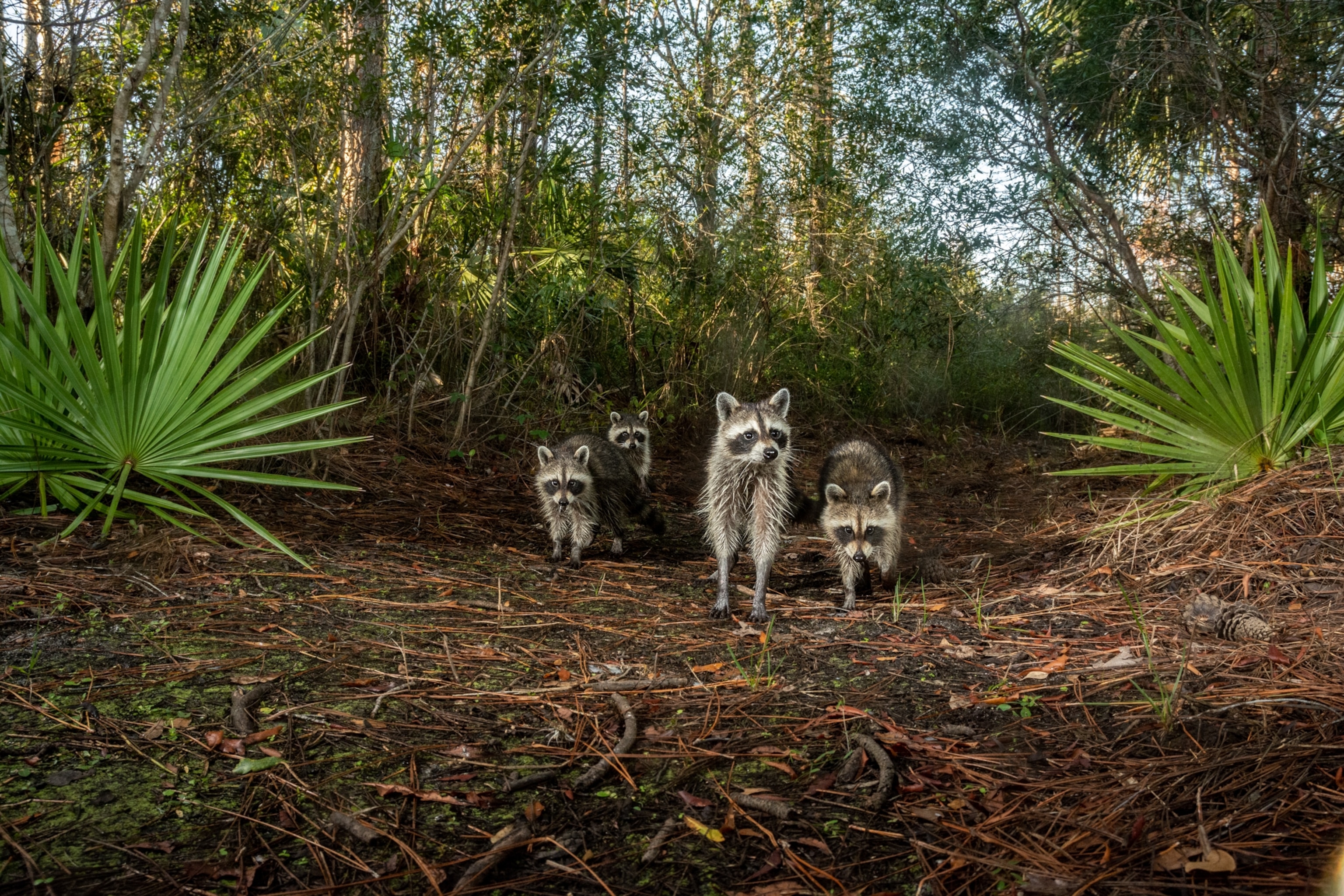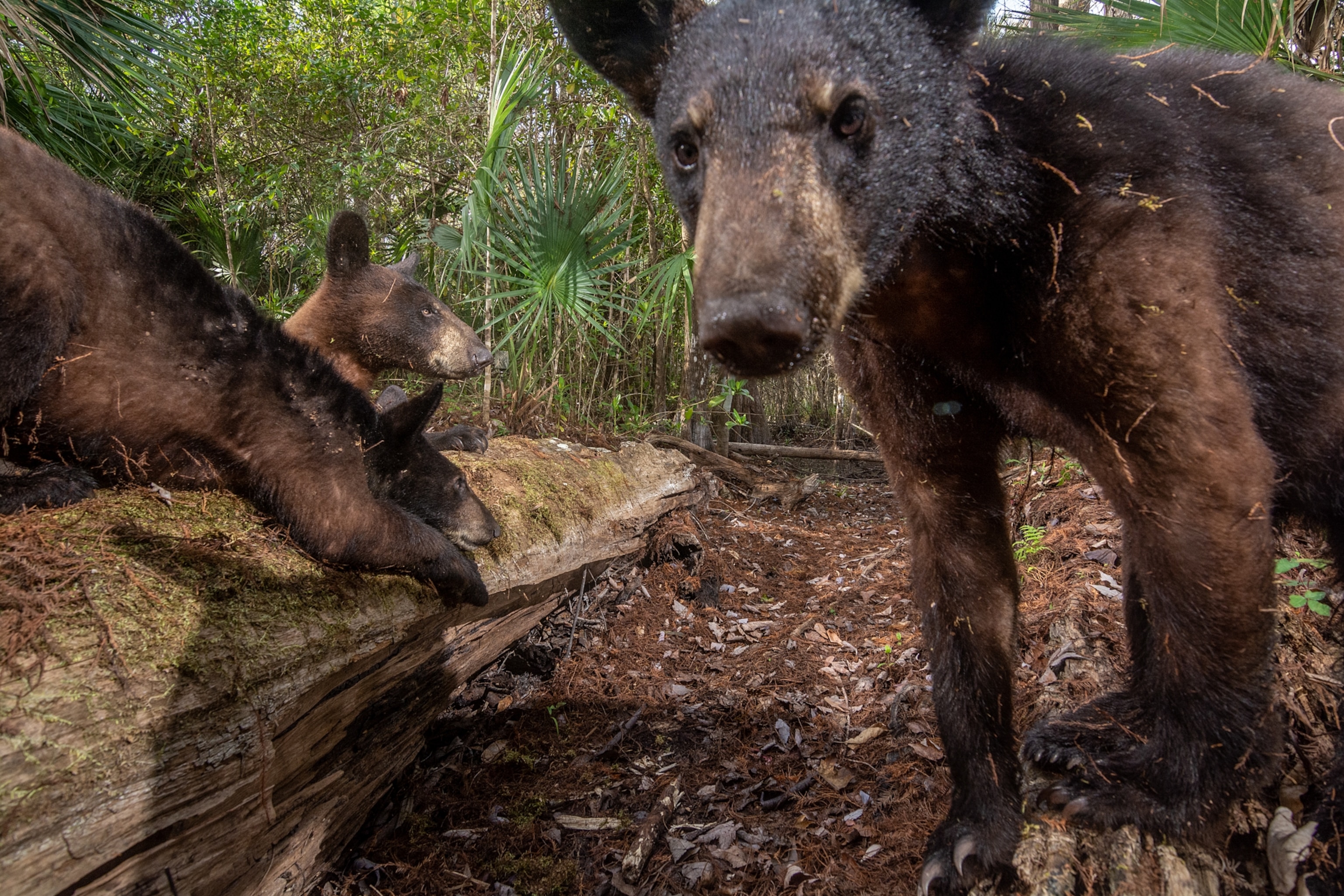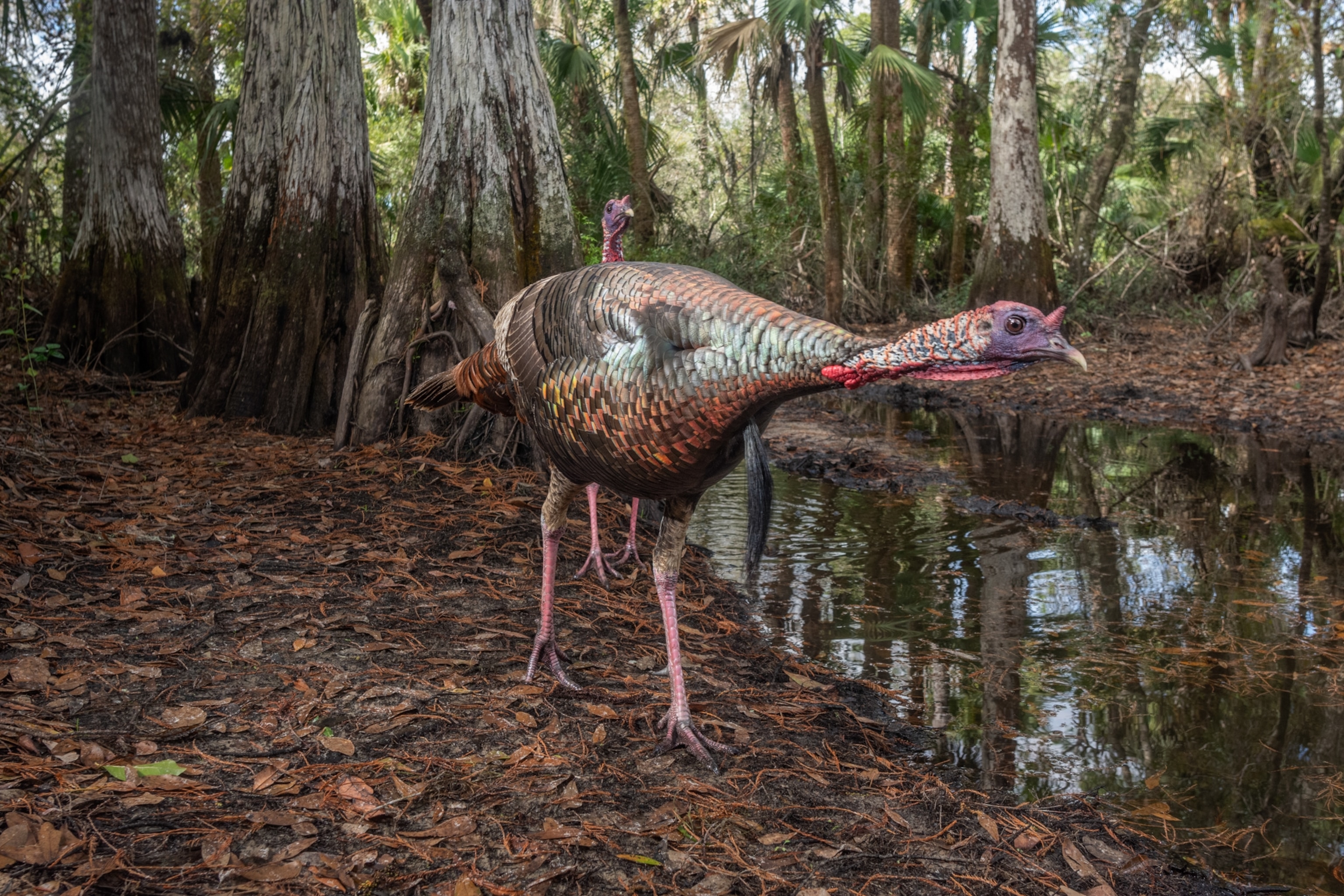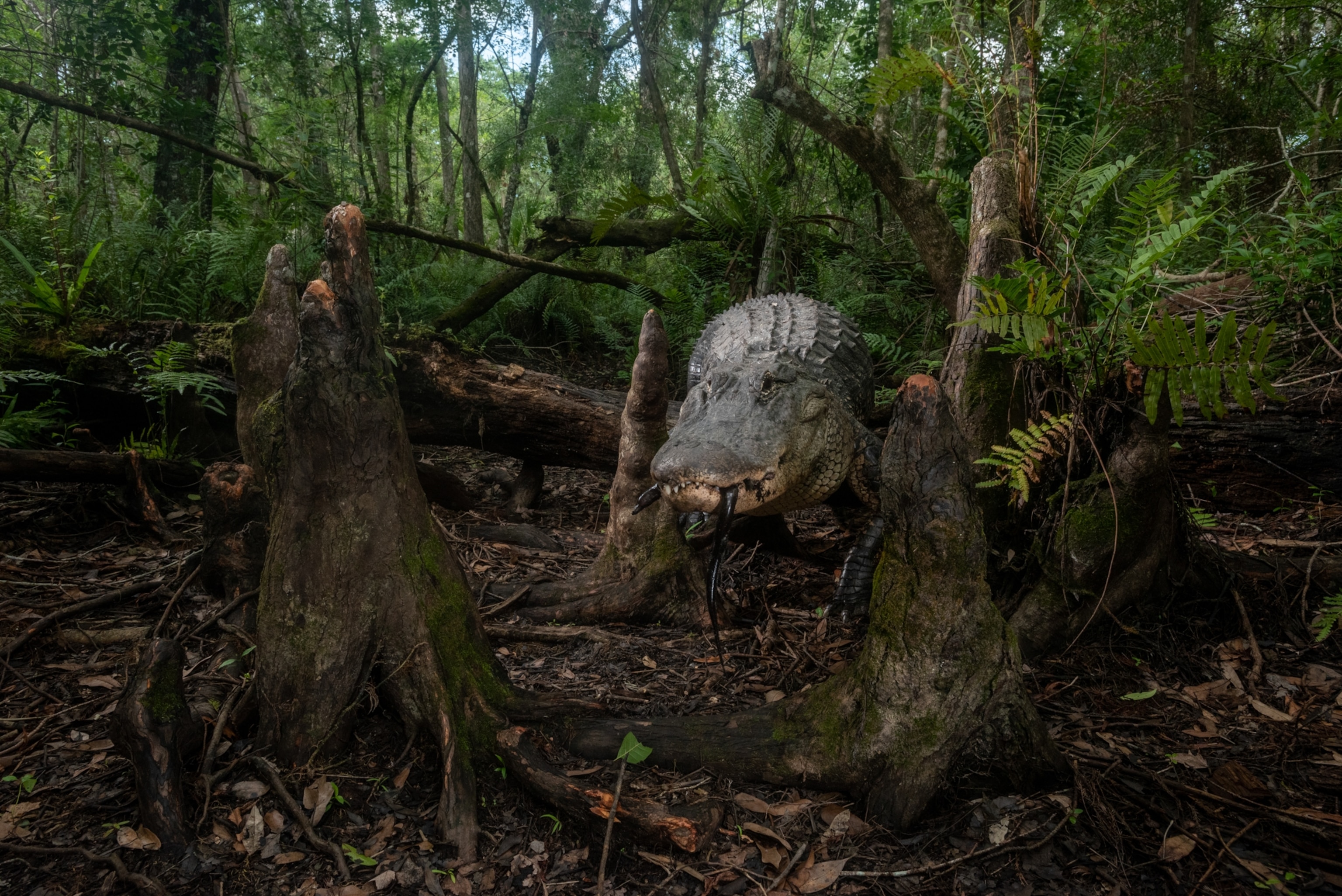
How America’s most endangered cat could help save Florida
Once nearly extinct, the Florida panther is expanding its range. Protecting wildlife corridors could save the cat—and humans—from sprawl.
“Welcome to panther country,” Brian Kelly says when I meet him at a busy intersection in East Naples, Florida, a stone’s throw from a gas station and an urgent care center.

Kelly, a state panther biologist, points east into the sprawling subdivision where he lives. A panther was caught on camera just a quarter mile away, he says, and another one made it across the six-lane road we’re standing beside.
Yet another panther, an eight-year-old female named FP224, lives nearby. She’s been hit by a car twice, breaking a leg each time. She was treated by veterinarians and released after both accidents. To look for signs of her, we drive to Kelly’s house, next to a patch of forest where she recently denned and birthed at least three kittens. It’s the wet season, when panther tracks typically are wiped out by rain, but we get lucky.

“There she is,” Kelly says, pointing to large paw prints, about the size of my fist, in the soft sand. We follow the prints through tall pines and sabal palms festooned with air plants. A check of a motion-triggered camera trap Kelly placed there reveals that FP224 walked by just before 9 p.m., two evenings earlier.

Her tracks are thrilling to see—a reminder that Florida still has wilderness and large cats, some of them resilient enough to live unseen along the fringes of the expanding suburbs.
Most Floridians will never see any signs of these predators, which weigh from 65 to 165 pounds as adults, depending on sex, and can leap more than 10 yards in a single bound. But the panther—known to the Cherokee as “lord of the forest”—depends on the millions of acres of swamps, forests, and fields in southwestern and central Florida, many of which are at imminent risk of development.
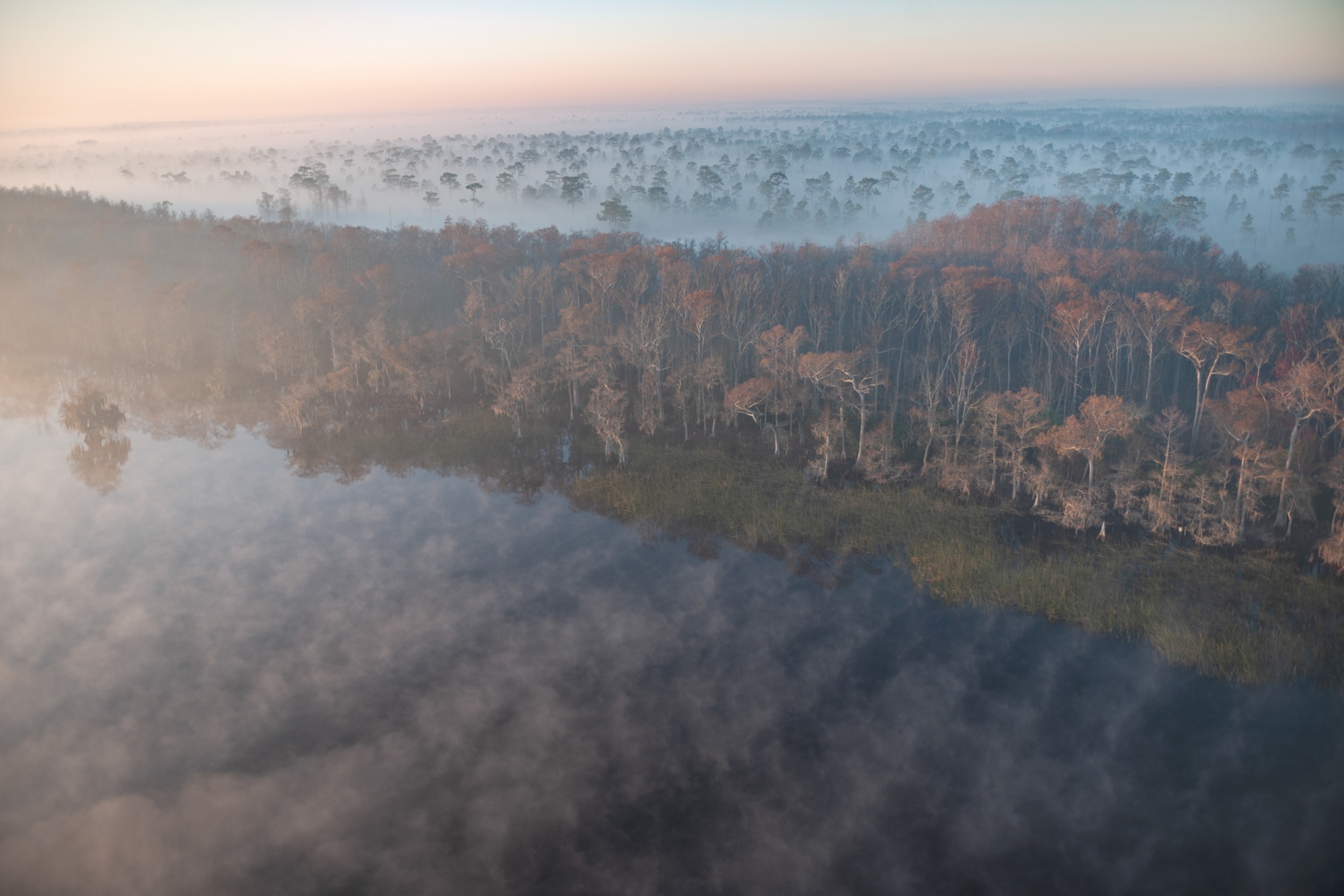
The Florida panther, classified as a subspecies of mountain lion, or cougar, once ranged throughout most of the southeastern United States. But the animals were hunted aggressively, and by the 1970s they were only found in Florida, and their numbers had fallen to fewer than 30, making them highly vulnerable to inbreeding. They were within a whisker of going extinct, says Kelly, a slim man often adorned in clothes bearing the insignia of his employer, the Florida Fish and Wildlife Conservation Commission.
Scientists back then hatched an unprecedented rescue plan: In the mid-1990s they hired Texan Roy McBride, arguably the world’s best mountain lion tracker, to capture eight of the cats in Texas, all females, then release them into South Florida. Five of them bred, and this infusion of genetic diversity reversed the panther’s downward spiral.
Populations grew slowly, and now there are about 200 individuals, most of them in a massive stretch of contiguous land south of the Caloosahatchee River, which stretches east from Fort Myers. “It’s one of the most dramatic conservation success stories in U.S. history,” says Carlton Ward, Jr., a conservationist and photographer whose work is supported by the National Geographic Society.
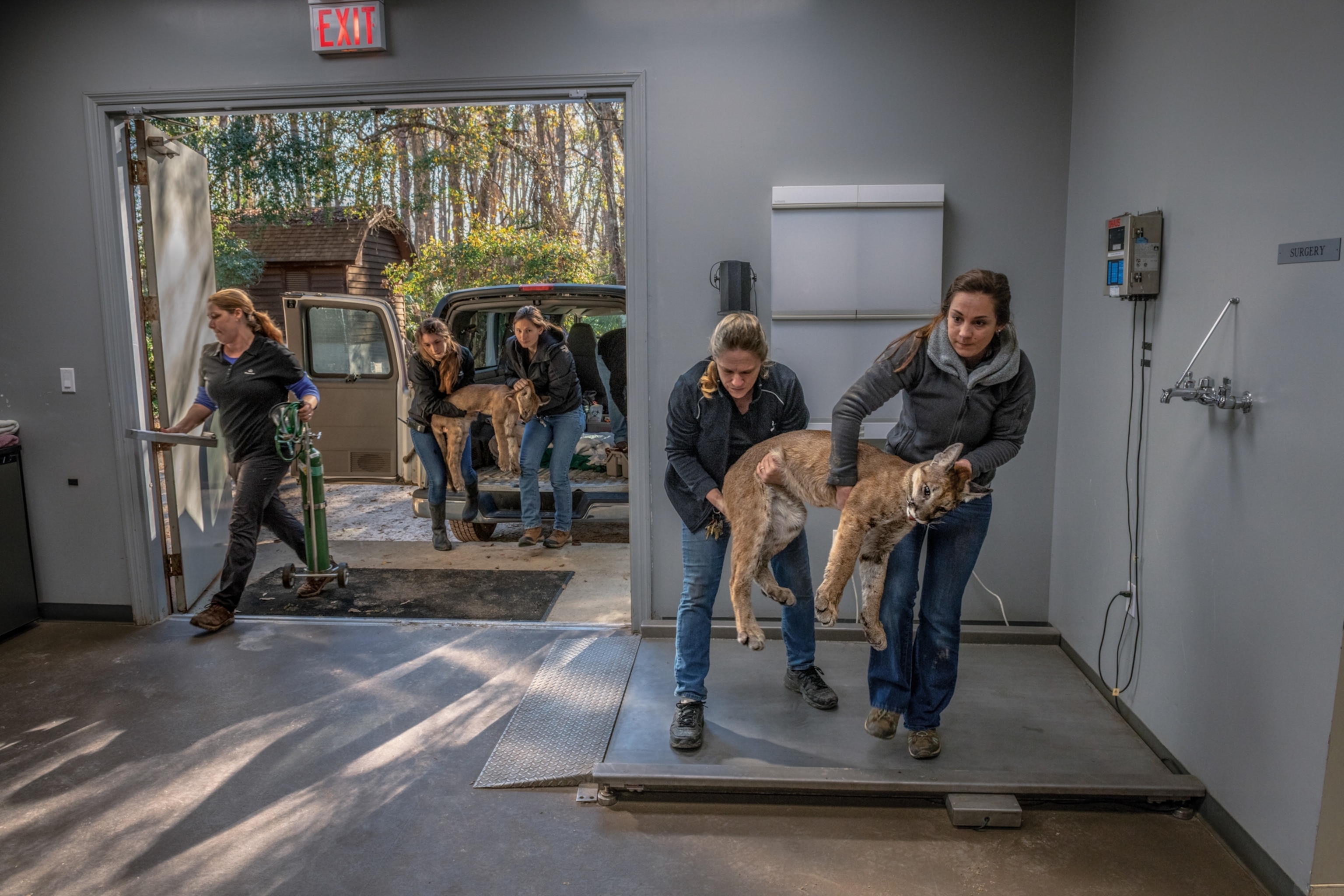
But a variety of threats cloud the panther’s future, including car collisions and panther-on-panther territorial spats, the two leading causes of death. About 25 of the cats are killed by vehicles each year, a reflection of how development and road construction threaten the species at a time when roughly 900 people are moving to Florida every day.
Additionally, a new debilitating neurological condition with an unknown cause has afflicted more than a dozen panthers, alarming conservationists.
There is also good news, however: Panthers are reclaiming some of their old territory. In 2016 scientists spotted a female north of the Caloosahatchee River for the first time since 1973.
“That was a milestone,” wildlife biologist Jennifer Korn says of the sighting in the Babcock Ranch Preserve. Unlike males, females don’t travel far from their mother’s home range, a major limiting factor in the animal’s expansion.
About a couple dozen panthers now live north of the Caloosahatchee, Kelly estimates, including a few females.
The northward expansion is necessary for panthers to survive long term, but it’s possible only if the Florida Wildlife Corridor, a patchwork of public and private lands that runs throughout the state, is preserved, Ward says. To make that possible, more conservation funding is needed to help landowners, mainly ranchers, prevent open spaces from becoming subdivisions, parking lots, and roads.
At the center of the panther’s northward recovery is a landscape known as the Everglades headwaters, part of the watershed that supplies nearly 10 million Floridians. Some of the water that originates here reaches swamps to the south, and investments in protecting this area will help the Everglades as well, conservationists say.
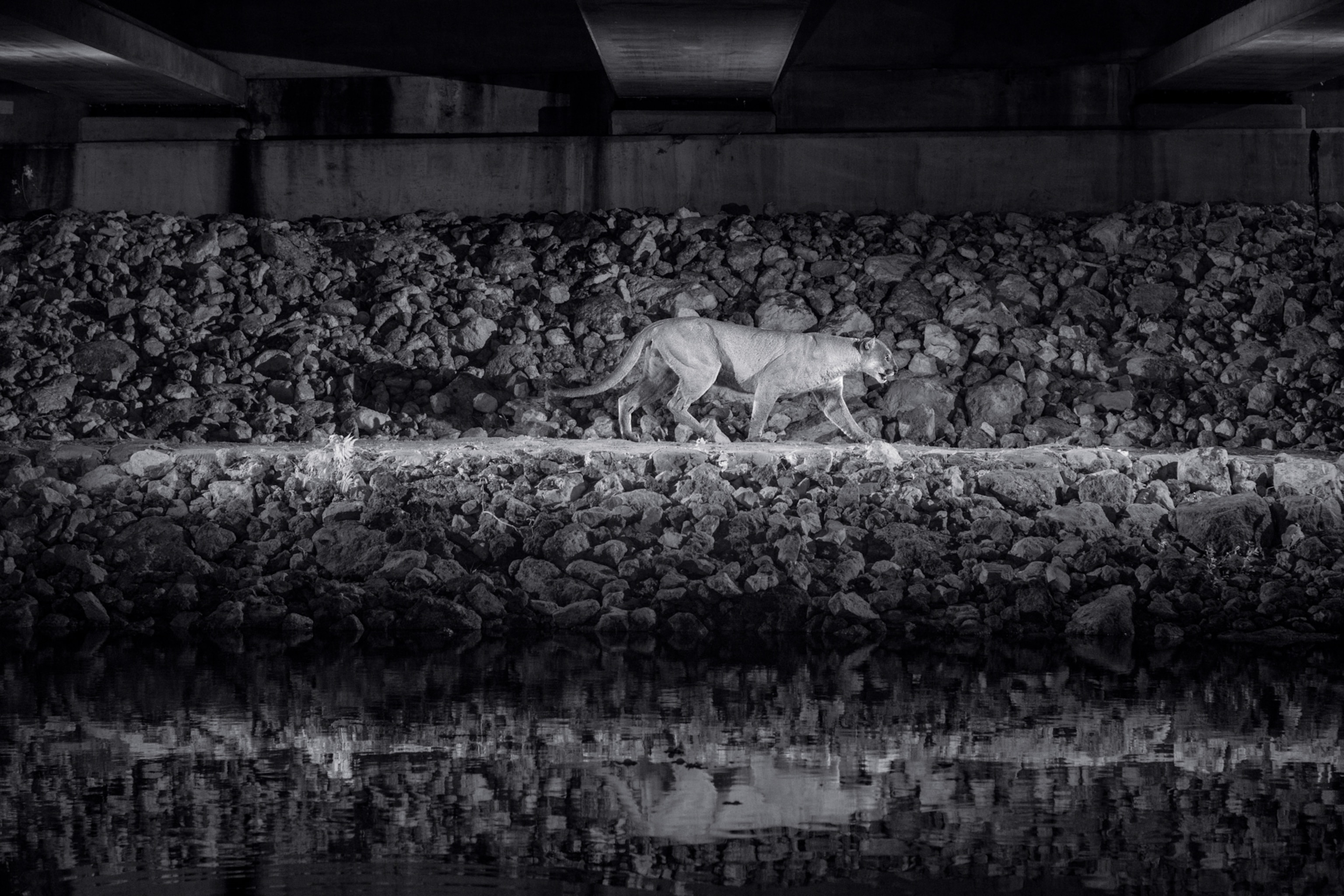
Many of the cats in Florida live on public lands, including Big Cypress National Preserve, Florida Panther National Wildlife Refuge, Fakahatchee Strand Preserve State Park, and Picayune Strand State Forest, which make up about 1,420 square miles.
But these and nearby protected areas in South Florida cannot support a much larger population of these territorial animals, says state panther biologist Dave Onorato. Panthers may each need up to 200 square miles of territory in which to roam and hunt, he says. At the same time, populations of white-tailed deer, one of panthers’ primary food sources, have dropped in areas of Big Cypress. That may be partly because of invasive Burmese pythons, which devour deer and other panther prey.
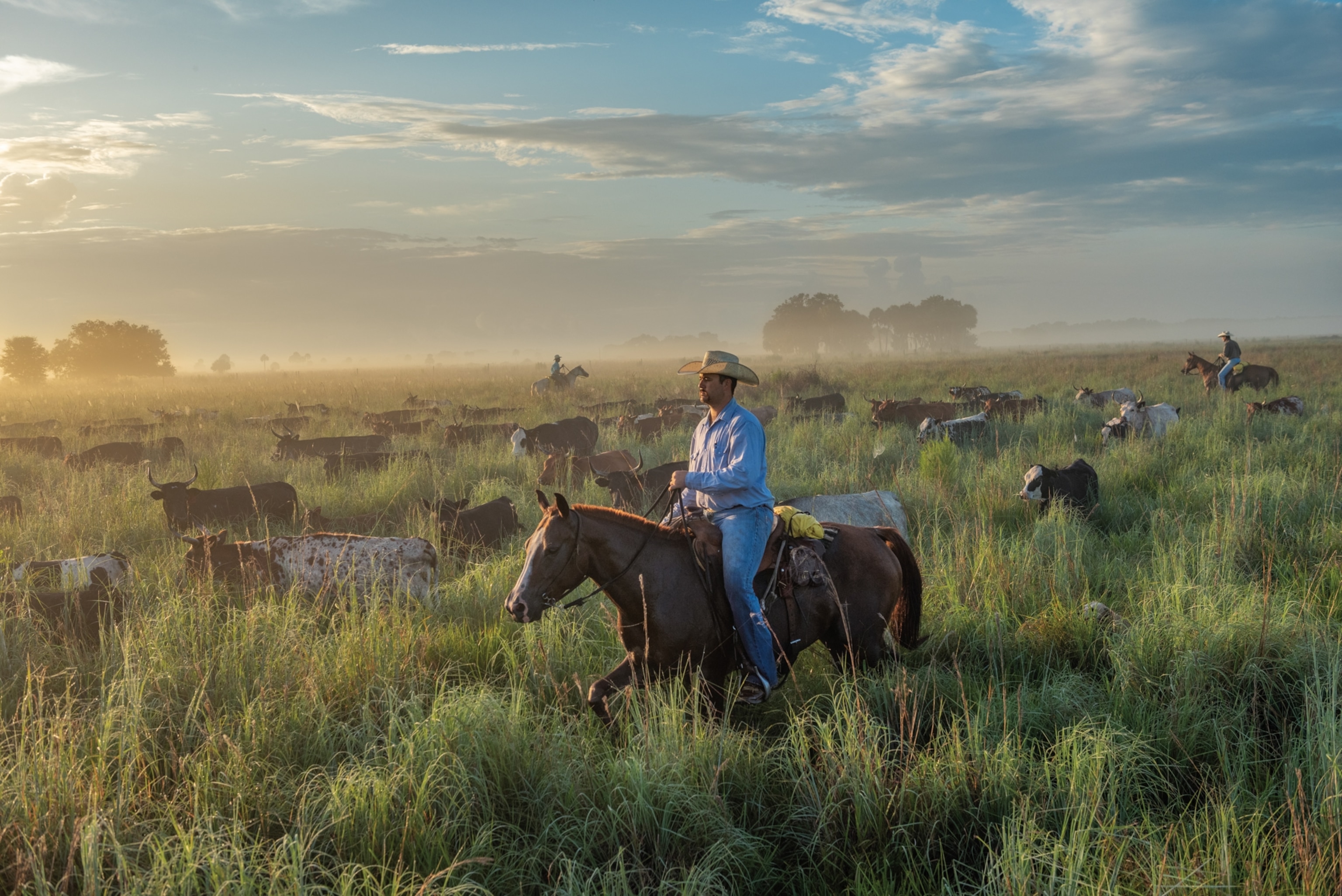
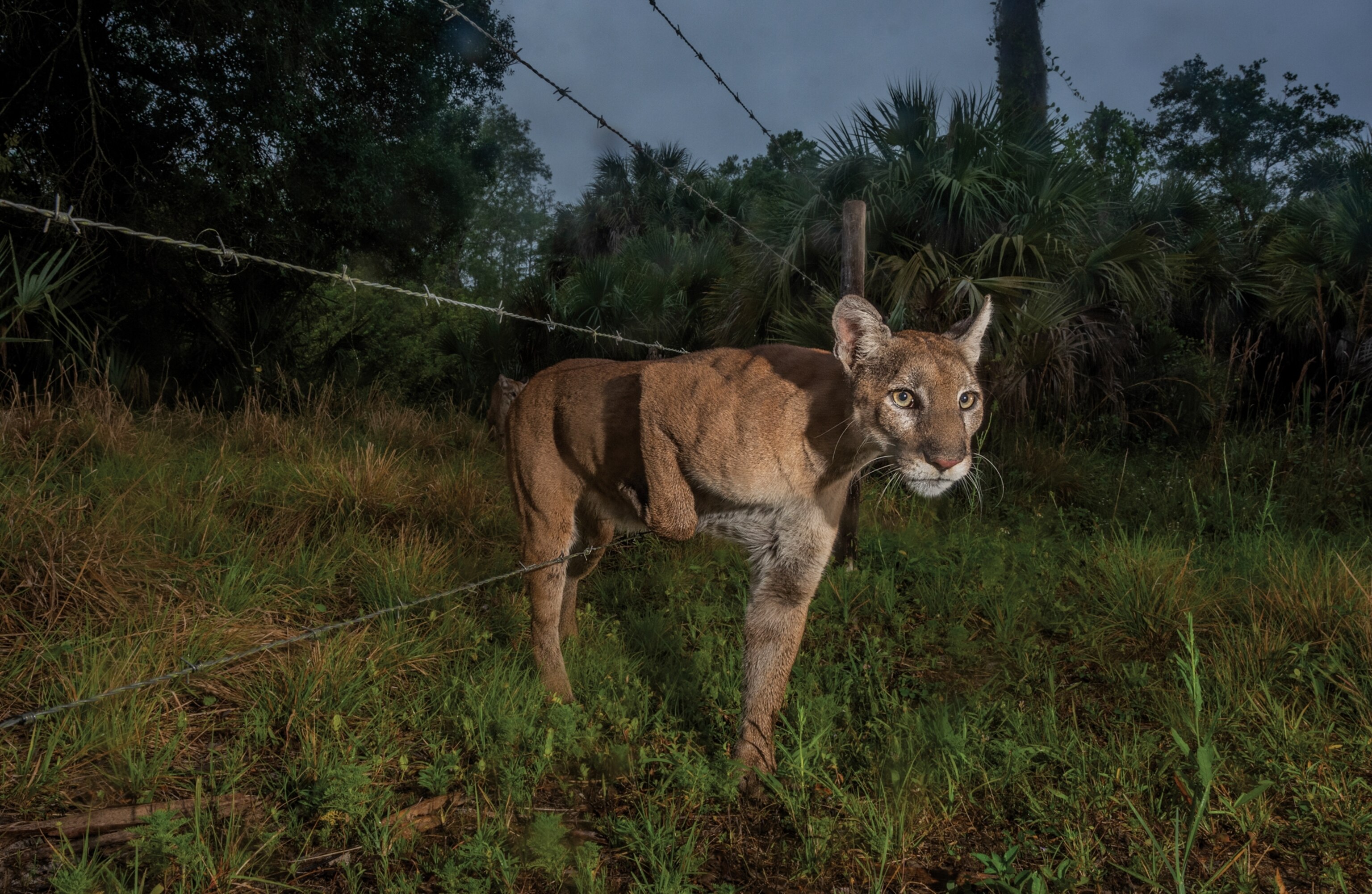
As panthers strike out north of the Caloosahatchee River, they’ll encounter land dominated by large ranches and farms. Roads cut through many of these areas, and the region is dotted with small, often expanding towns. One of the better-known cattle operations in south-central Florida is the 10,500-acre Buck Island Ranch, run by Gene Lollis, a sixth-generation Floridian.
On a March morning before sunrise, I head out on horseback with Lollis, who’s wearing a cowboy hat, boots, and blue jeans, along with his son, Laurent, and a group of cowboys, to round up cattle in grasslands spotted with islands of cabbage palm and oak.
Like many ranches, Buck Island—owned by the Archbold Biological Station, a nearby ecological research and education facility—provides critical habitat for wildlife, including panthers.
As dogs bay and the cowboys corral their livestock, I ask Lollis, who leads the Florida Cattlemen’s Association, how ranchers view the panther. “We’re all pretty positive about them,” he says. “They’re part of the landscape.”
Generally speaking, the rancher and the panther face a common enemy: development, particularly new housing. Every ranch owner has had an offer from developers, Lollis says, adding that the issue is deeply personal—ranches near Orlando where he worked as a young man have become subdivisions.
Some see the panthers’ presence as a positive because it makes developing certain areas of land into suburbs more difficult.
“On the Endangered Species Act, do you see ‘cowboy’ or ‘rancher’ written on it? No, but we benefit from the protections afforded the panther,” says Elton Langford, a rancher who lives to the west, near Arcadia.
But some ranchers, especially to the south, where there are more panthers, are warier, says Alex Johns, a Seminole cattleman whose family has ranched since his ancestors poached cows from the Spanish in the 1500s.
In this region, panthers occasionally eat calves. A study conducted at one ranch found panthers kill less than one percent of calves; another study found the predators killed around 5 percent.
Panthers sometimes are blamed for kills by coyotes, bears, and even buzzards, says Deborah Jansen, a Big Cypress National Preserve panther biologist who’s worked with the felines since the early 1980s.
Calf loss can stir resentment and even lead to retaliation, cattleman Johns says. Making matters worse, the federal program that compensates ranchers for livestock losses because of panthers is flawed, he adds, describing a process in which the paperwork is difficult and time-consuming, and reimbursement often is not granted.
David Shindle, panther coordinator with the U.S. Fish and Wildlife Service, agrees that the reimbursement program needs improvement, and he sees the two sides as allies. “To save the panther, we have to save the rancher,” he says.
Panther advocates, Shindle adds, need to find a way to incentivize the presence of the animals on the land—which is mostly private north of the Caloosahatchee River. One way to do that is to encourage public and private investment in conservation easements, which buy up development rights while allowing the owners to continue farming and ranching.
A more immediate danger to panthers, conservationists say, is a proposed major network of toll roads known as M-CORES. Part of it would cut a 140-mile path from near Orlando to Naples.
Staunchly opposed by conservationists and many ranchers, this section of the road would slice through areas of the wildlife corridor and some of the last undeveloped parts of interior southwestern Florida.
On top of this, scientists have discovered a neurological condition called feline leukomyelopathy, which affects panthers and bobcats in Florida. Affected animals often stumble or have trouble walking, and severe cases can lead to paralysis, starvation, and death.
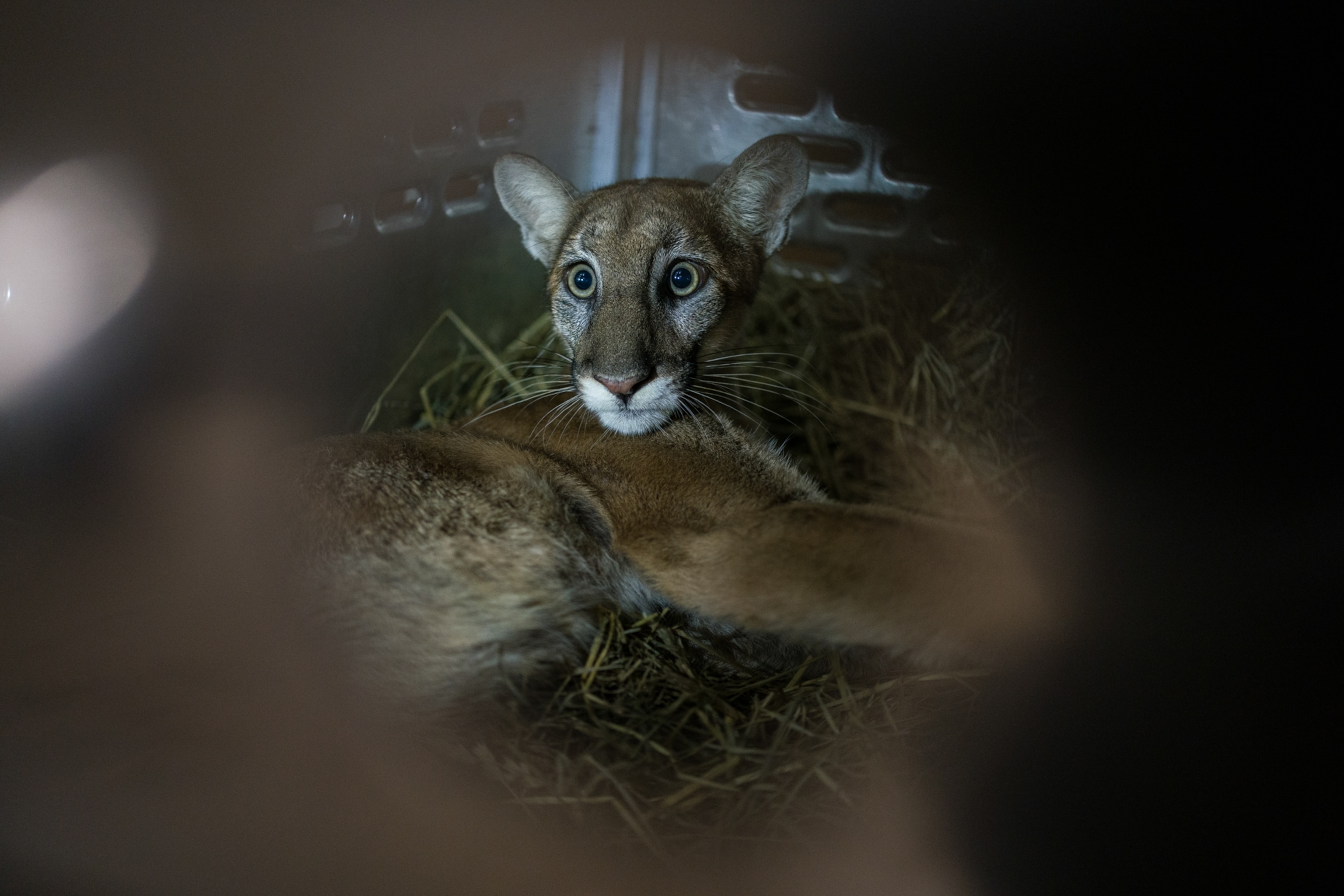
As of December 2020, 26 bobcats and 18 panthers are thought to have had the disease, according to state biologists. Three panthers have likely died from it in Big Cypress alone, Jansen says. The syndrome’s cause is unknown, but theories include exposure to toxic chemicals or a pathogen such as a virus.
Most animals with the disease have been found in areas bordering developed land; seeing cases in more pristine areas, such as Big Cypress, is concerning, Jansen says.
Because of the threats panthers face, Jansen thinks “the future of the Florida panther is very much in question”—and is a major reason why expanding the cat’s habitat is key.
Kelly is more optimistic. If enough green spaces and wildlife corridor areas are protected, he says, panthers could make it all the way to northern Florida within decades, and potentially spread to other states with rich panther habitat, including Georgia. In 2008 a male panther born near the Everglades made it to western Georgia, about a hundred miles north of the Florida state line, before being shot by a deer hunter.
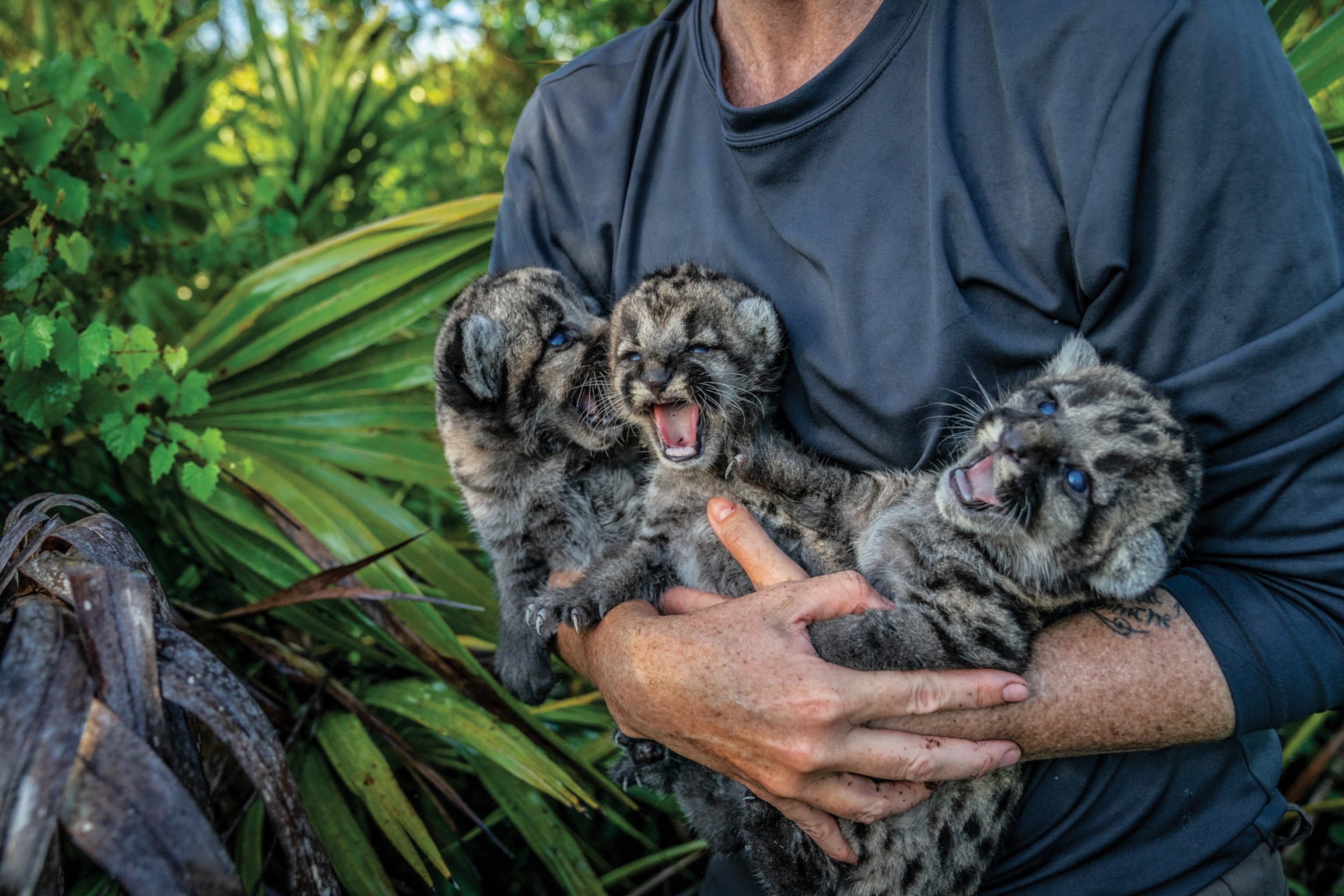
In the meantime, Kelly and colleagues have placed around a hundred cameras at various spots north of the Caloosahatchee to learn more about how and where panthers move. A female recently lumbered through the Fisheating Creek area, as well as another in Babcock, and both were seen with males. That’s cause for celebration, Kelly says, because coupled panthers often produce kittens.
On a fall afternoon I walk with Kelly through muddy, dense brush to the edge of a creek in Babcock Ranch Preserve. Pointing to a tangle of sabal palms, he recalls seeing a panther here a month before.
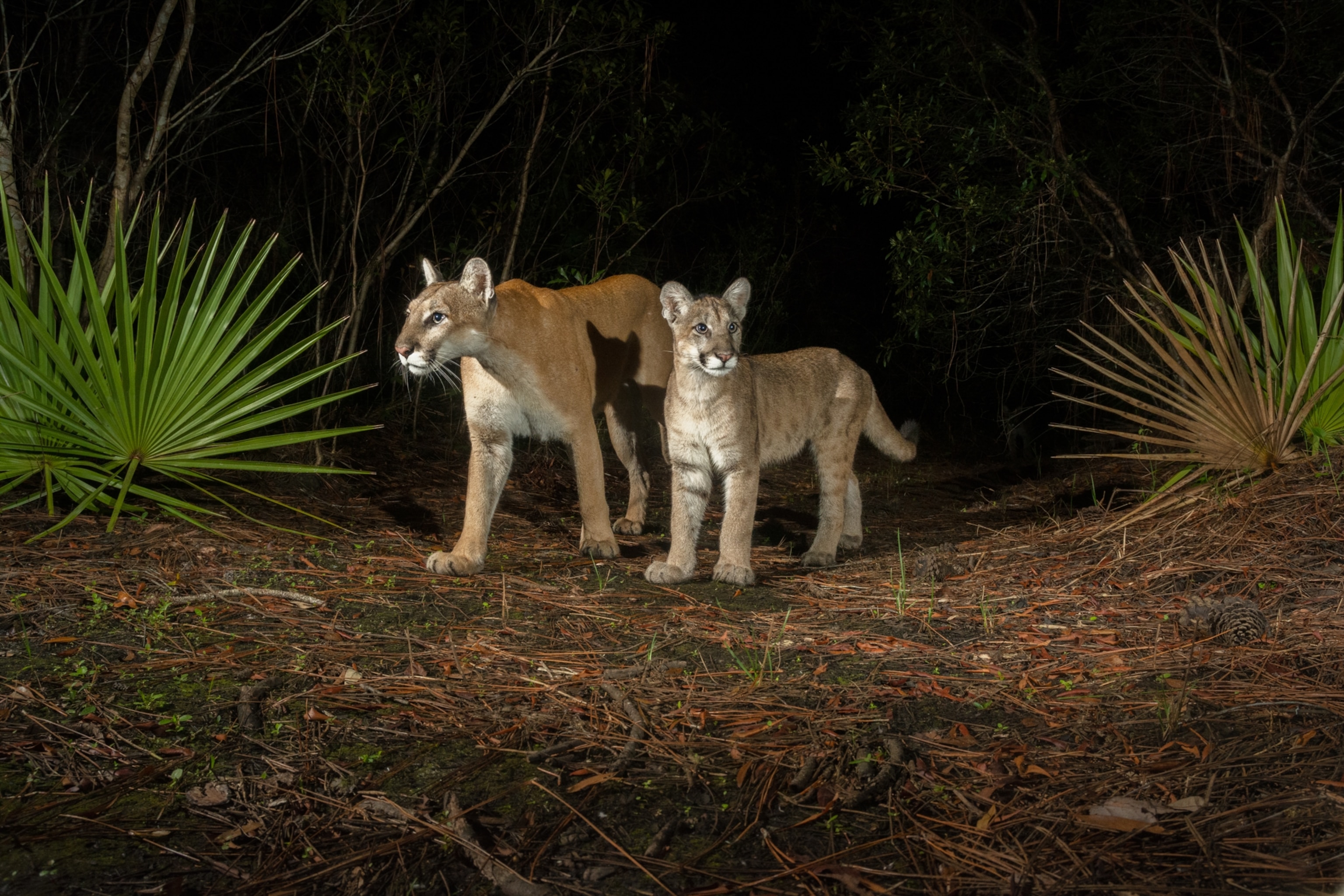
“We just stared at each other for about 20 minutes,” says Kelly, who quickly realized it was a female by her small size and because she was wailing, a sign of being in heat.
That was momentous—the first verified in-person sighting of a panther north of the Caloosahatchee River since the cougar tracker, Roy McBride, found an old female at Fisheating Creek in 1973.
This newfound female was “my white whale,” Kelly says.
Later we take a swamp buggy through this area, 20 miles to the north, crossing flooded fields and meandering through thickets of palmetto and cypress hammocks. Wildlife here is plentiful: On a good day you can see bears, otters, alligators, and bird species including crested caracaras and swallow-tailed kites, all of which rely on the same wildlands as panthers.
Kelly stops to check a recently placed camera, looped around an oak tree. He flips through the photos, and sandwiched within all the usual suspects—coyotes, wild pigs, raccoons, deer—is a photo of a panther, which passed by a few weeks earlier.
And not just any panther: A lanky female, never before spotted by biologists, striding along the northern side of the fence separating the creek from the adjoining ranch—and perhaps to a new life up north.
Staff writer Douglas Main wrote about treehoppers in the March 2019 issue. Carlton Ward, Jr., has trekked more than 2,000 miles throughout Florida to bring attention to the state’s wildlife corridor.
The National Geographic Society is committed to illuminating and protecting the wonder of our world. Learn more about the Society’s support of its Explorers.
This story appears in the April 2021 issue of National Geographic magazine.

